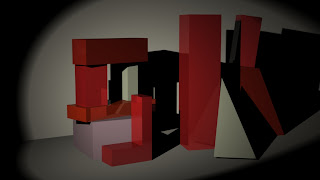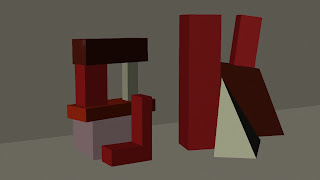“X2: X-Men United” is a film, released in 2003, that
follows a group of superhuman mutants that are trying to integrate into the
regular world. Each mutant has his or her own special powers, whether it be the
ability to walk through walls, heal instantly, control fire, manipulate
weather, or anything else imaginable. The film does a decent job of convincing
the viewer to go along with this fantastical reality because it is grounded in
the real world, and one way in which they convey this is by following real
science. When the film effectively uses real physics to explain and rule these
supernatural powers, the film successfully convinces the viewer to suspend disbelief
and accept the story as it goes on, while moments that illogically disobey real
world physics, essentially put the film on pause.
The most common issue in films, in regards to
physics, would be accurate gravity. “X2” features characters that can fly or levitate,
and the viewer can accept that this is part of the reality. The opening scene introduces
a character named Nightcrawler, who is able to teleport anywhere. This scene is
very well done for the most part, because we can instantly identify what his
capabilities are and beyond these powers, he seems to move realistically. On
the other hand, when something looks implausible and cannot be explained by the
character’s powers, it stands out as being questionable. Most commonly, the
issue is when characters are sent flying through the air from being struck or
thrown. If a character has the ability to jump high or can survive a huge fall,
we can accept that, but there’s no reason that he or she should not follow the
laws of Earth’s gravity when the character does not have the ability to fly or
levitate. In one scene, the character, Wolverine, is seen leaping horizontally
off of a balcony to pounce on his victim. Wolverine has the ability to heal
almost instantaneously and has medal claws, but has no sort of powers that
would allow him to defy gravity. He jumps outward off the balcony railing, not
upward, meaning he begins falling as soon as his feet leave the balcony
railing, but he is in the air for roughly 45 frames. Using the formula:
(distance in inches) = (number of frames) x (number of frames) x (1/3 inch),
that would mean that Wolverine should have fallen around 56 feet in that time
span. While the shot makes it hard to judge, the interior, second story balcony
can’t be more than 25 feet high, meaning he should have fallen more than double
the distance in that amount of time. Of course, while no one is going to the
theatres with a calculator to check that every fall is accurate, the scene
obviously looks wrong, whether or not the viewer can identify exactly the
reason why, because we can intuitively spot inaccurate falls, especially one as
exceedingly incorrect as this example. While the amount of time it takes for a
character to fall may jump out at the viewer, there are other visual cues that may
be even more obvious.
The parabolic arc of an object or person that is
falling can be identified instinctually. When we see a basketball flying through
the air, we can very quickly see whether or not it will reach the hoop.
Baseball players can predict where a ball will land because our eyes can see
the angle and speed of the ball and instinctually see the parabolic arc it will
follow. So, when something does not follow the arc that our eyes predict, we
know that something is wrong. In these very common scenes where characters are
sent flying through the air from being struck or thrown, not only are they in
the air for far too long, but they generally don’t follow the proper arc,
either. In the finale fight scene featuring Wolverine, he is struck by a villain,
so hard that it sends him flying almost 30 feet across a room, which takes
around 22 frames before he hits the ground. He is thrown upward a bit and doesn’t
seem to hit the apex until 17 frames into the fall. He should be hitting the
apex around 11 frames into the fall, at the center of the arc, but instead he
appears to suddenly drop at the end. He is thrown again, moments later, this
time into a concrete pillar and he has an airtime of around 24 frames. In this
instance, he travels across the room almost perfectly horizontal, somewhere
between 40 or 50 feet. For him to travel with nearly a flat parabolic arc, he
would have to have been thrown like a fast ball. In one whole second, he should
be dropping around 16 feet, but instead falls less than a foot before he
crashes into the pillar. The throw should have taken less than a quarter of a
second, for that path of action to be accurate, so instead he appears to be
floating, making it obvious that he is swinging from ropes. There are several
instances of this sort of thing occurring that ruin the believability of these
fight scenes and take what is intended to be a powerful strike and make it look
like a push. Accurately depicting a throw that hard may not show up well on
film, but the impact would appear much more devastating and effective.
Limitations to these characters’ supernatural powers
add plausibility, so when they are able do something that is not explained by
their power, again, the viewer is able to spot it, instantly. The character,
Pyro, can manipulate fire, but cannot create it; Nightcrawler needs to be able
to see where he’s going to teleport; Cyclops needs to wear protective glasses
to contain the energy that shoots from his eyes. The character, Magneto, is
able to create incredible magnetic powers, but his abilities are limited to
only manipulating metal. He is able to fly, or levitate when he is wearing
metal because he can telekinetically lift metals, and as viewers, it is easy
enough to go along with this. The filmmakers do a great job of reminding us of
his limits, with the scene in which he is kept in a plastic prison cell. There
is no metal near him, so he is essentially powerless. Unfortunately, he is then
visited by a prison guard, who had previously been injected with a needle
filled with iron. Magneto lifts the guard up into the air and extracts the iron
(in a powdery form), out of his skin, and once it is all out, the guard drops
from the air, dead. You could argue that the powdery iron wouldn't lift the man
in the first place, who is over 200 pounds, because, each grain of iron has
such a tiny surface area, that it would simply shoot out of his skin once
Magneto levitated them, but without a doubt, the man shouldn't continue to
levitate in a vertical position all the way up until the last bit is extracted.
Magneto pulls the iron through the guard’s chest, so even if you can get over
the fact that the last few grains of iron in his body are able to support his
weight, he should still be hanging from his chest at the last moment, and his
center of gravity would swing his legs forward. Because of this inaccuracy, it
appears that Magneto is able to levitate the man for a moment, even after the
metal is out of his body. Another example where the creators contradict a
character’s powers would be the scene in which Professor X is able to freeze an
entire room of people where they stand. Professor X has incredible telepathic
abilities, but has no physical powers, so it is assumed in this scene, that he basically
put everyone’s brain on pause. The issue with this is that several people can
be seen frozen mid step or in the middle of an action where they are left off
balance. Bipedal walking has been described as “controlled falling,” so to stop
someone mid step, their center of gravity is shifted forward, and they would
not be able to catch themselves. If he has no telekinetic ability, then you
could assume that many of these people would fall over. These seem to be very nit-picky details, but they are obvious enough to distract the viewer.
X2: X-Men United was a groundbreaking film for the
modern superhero genre, because it was one of the earliest superhero films to
attempt to make the viewer feel as though the fantastical characters could
possibly exist in the real world. At the time of its release, the film was great,
but after Christopher Nolan’s Dark Knight franchise took this concept to the
next level, the bar has been set too high for superhero films to get away with
such obvious mistakes and disregard for correct physics. While film-goers are
able to suspend disbelief when it is made logical, unreasoned anomalies will
quickly catch your eye and distract from the movie.
Changes From Outline:
I made some minor changes from my outline, to better
emphasize my stronger points. While the information is basically the same, I
felt that changing the main points better organized the body and were more
applicable to the thesis.

















